This pub is the former Palladium cinema, built in 1920 on the site of the Market Hall. Llandudno continued to expand in the early years of this century. During the interwar years, it acquired the Palladium and the Astra Theatre & Winter Gardens. The striking Palladium building is now this pub, while the Winter Gardens has been replaced by a block of flats.
Photographs and text about The Palladium.
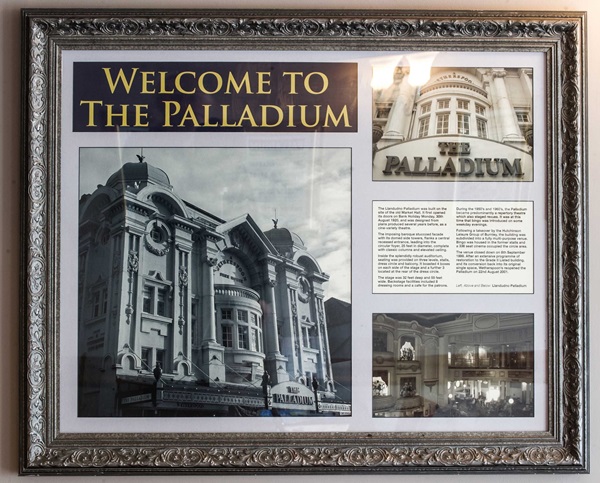
The text reads: The Llandudno Palladium was built on the site of the old Market Hall. It first opened its doors on Bank Holiday Monday, 30 August 1920, and was designed from plans produced several years before, as a cine-variety theatre.
The Imposing baroque stuccoed façade with its domed side towers flanks a central recessed entrance leading into the circular foyer, 25 feet in diameter, complete with classic columns and elevated ceiling.
Inside the splendidly robust auditorium, seating was provided on three levels, stalls, dress circle and balcony. It boasted 4 boxes on each side of the stage and a further 3 located at the rear of the dress circle.
The stage was 32 feet deep and 55 feet wide. Backstage facilities included 8 dressing rooms and a café for the patrons.
During the 1950s and 1960s, the Palladium became predominantly a repertory theatre which also staged revues. It was at this time that bingo was introduced on some weekday evenings.
Following a takeover by the Hutchinson Leisure Group of Burnley, the building was subdivided into a fully multi-purpose venue. Bingo was housed in the former stalls and a 336 seat cinema occupied the circle area.
The venue closed down on 8 September 1999. After an extension programme of restoration to the grade II Listed building, and its conversion back into its original single space, Wetherspoon reopened the Palladium on 22 August 2001.
Left, above, and below: Llandudno Palladium.
Photographs and text about Catlin’s Royal Pierrots.
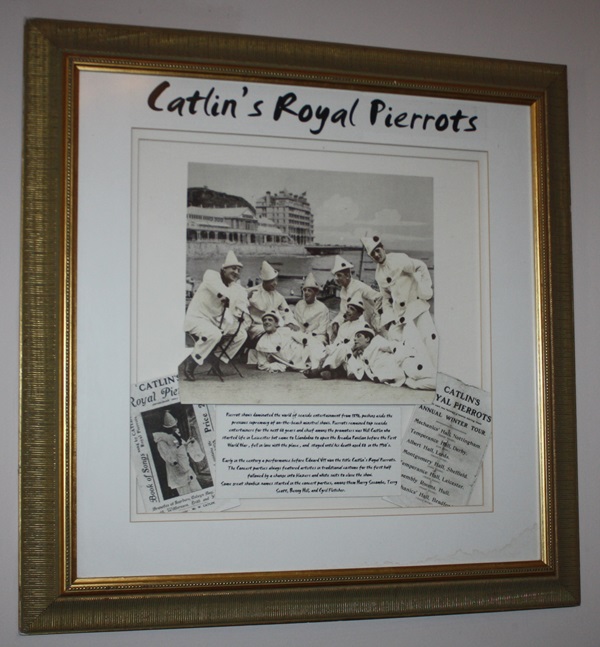
The text reads: Pierrot shows dominated the world of seaside entertainment from 1890, pushing aside the previous supremacy of on-the-beach minstrel shows. Pierrot remained top seaside entertainers for the next 60 years and chief among the promoters was Will Caitlin who started life in Leicester but came to Llandudno to open the Arcadia Pavilion before the First World War, fell in love with place, and stayed until his death aged 80 in the 1930s.
Early in the century a performance before Edward VII won the title Catlin’s Regal Pierrots. The concert parties always featured artists in traditional costume for the first half followed by a change into blazers and whit suits to close the show. Some great showbiz names started in the concert parties, among Harry Secombe, Terry Scott, Benny Hill, and Cyril Fletcher.
A photograph of sunbathers on the beach at Llandudno’s North Shore with the Pavilion and Grand Hotel beyond, c1918.
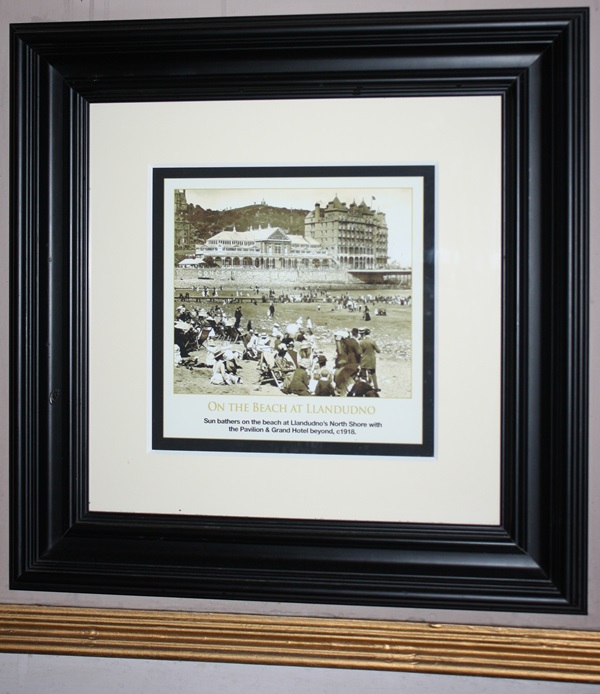
Photographs, an illustration and text about Alice Liddell.
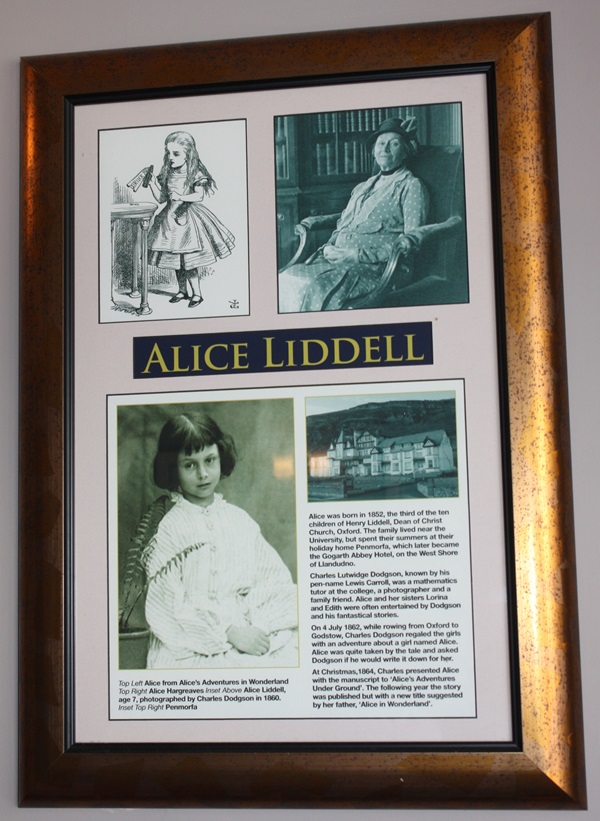
The text reads: Alice was born in 1852, the third of the ten children of Henry Liddell, Dean of Christ Church, Oxford. The family lived near the university, but spent their summers at their holiday home Penmorfa, which later became the Gogarth Abby Hotel, on the West Shore of Llandudno.
Charles Lutwidge Dodgson, known by his pen-name Lewis Carroll, was a mathematics tutor at the college, a photographer and a family friend. Alice and her sisters Lorina and Edith were often entertained by Dodgson and his fantastical stories.
On 4 July 1862, while rowing from Oxford to Godstow, Charles Dodgson regaled the girls with an adventure about a girl named Alice. Alice was quite taken by the tale and asked Dodgson if he would write it down for her.
At Christmas, 1864, Charles presented Alice with a manuscript to Alice’s Adventures Under Ground. The following year the story was published but with a new title suggested by her father, Alice in Wonderland.
Photographs and illustrations of the pier.
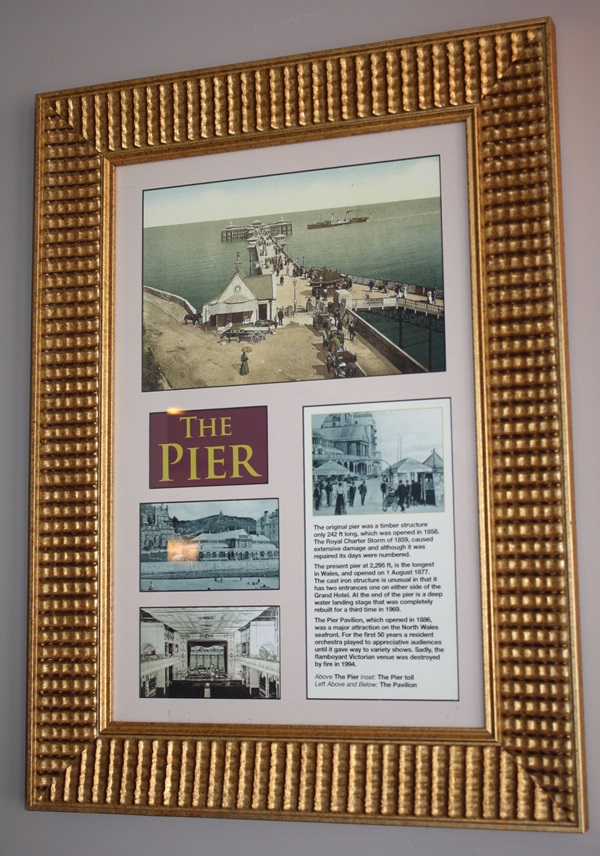
The text reads: The original pier was a timber structure only 242ft long, which was opened in 1858. The Royal Charter Storm of 1859 caused extensive damage and although it was repaired its days were numbered.
The present pier at 2,295ft, is the longest in Wales, and opened on 1 August 1877. The cast iron structure is unusual in that it has two entrances one on either side of the Grand Hotel. At the end of the pier is a deep water landing stage that was completely rebuilt for a third time in 1969.
The Pier Pavilion, which opened in 1886, was a major attraction on the North Wales seafront. For the first 50 years a resident orchestra played to appreciative audiences until it gave way to variety shows. Sadly, the flamboyant Victorian venue was destroyed by fire in 1994.
Above: The pier
Inset: The pier toll
Left above and below: The Palladium.
A print of SS La Marguerite, c1905.
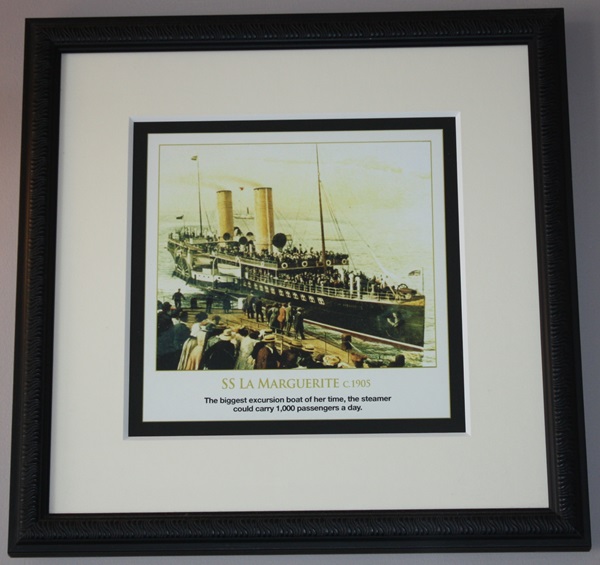
The biggest excursion boat of her time, the steamer could carry 1,000 passengers a day.
A photograph of LMS Royal Class Princess Elizabeth 6201 on her visit to Llandudno.

A print and text about The Right Honourable John Bright MP.
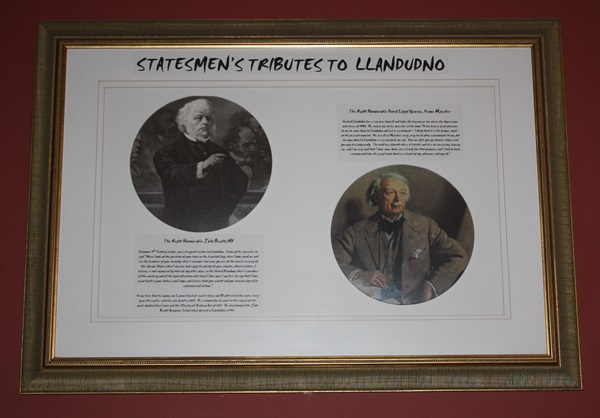
The text reads: A famous 19th century orator, was a frequent visitor to Llandudno. In one of his speeches he said “When I look at the position of your town on the beautiful bay; when I look round me and see the beauties of your locality; when I remember how near you are to the finest scenery of this glorious Wales; when I observe and enjoy the purity of your climate, which in water, I believe, is not surpassed by that of any other place in the United Kingdom; when I remember all the courtesy and all the kind attention with which I have met, I am free to say that I have met, I am free to say that I have great faith in your future; and I hope and believe that your growth and your prosperity will be continual and lasting. ”
It was here that his young son Leonard died of scarlet fever and Bright visited his grave every year thereafter until his own death in 1889. He is known for his part in the repeal of the much-loathed Corn Laws and the (Electoral) reform act 1867. He also founded the John Bright Grammar School which opened in Llandudno in 1967.
A photograph and text about St George’s Hotel.

The text reads: The beautiful haven of peace, Llandudno – with its wide streets and promenades was a sought after Victorian retreat. The St George’s Hotel opened its doors in 1834 to such prominent dignitaries as Bismarck, Disraeli, Gladstone, Churchill, Napoleon III and the Empress Eugenie of France.
Photographs, illustrations and text about the Codmans of Llandudno.
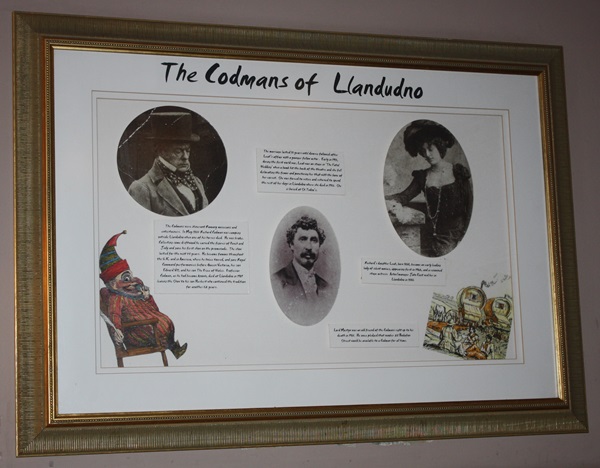
The text reads: Richard’s daughter Leah, born 1868, became an early leading lady of silent movies, appearing first in 1902, and a renowned stage actress. Actor/manager John East wed her in Llandudno.
Lord Mostyn was an old friend of the Codmans right up to his death in 1965. He once pledged that number 28 Bodafon Street would be available to a Codman for all time.
The Codmans were itinerant Romany musicians and entertainers. In May 1864 Richard Codman was camping outside Llandudno when one of his horses died. He was broke. Collecting some driftwood he carved the figures of Punch and Judy and gave his first show on the promenade. The show lasted for the next 45 years. He became famous throughout the UK and in America, where he twice toured, and gave Royal Command performances before Queen Victoria, her son Edward VII, and his son The Prince of Wales. Professor Codman, as he had become known, died at Llandudno in 1909 leaving the show to his son Herbert who continued the tradition for another 52 years.
The marriage lasted 15 years until divorce followed after Leah’s affair with a younger fellow actor. Early in 1915, during the first world war, Leah was on stage in The Fatal Wedding when a bomb hit the back of the theatre and she fell, dislocating the femur and puncturing her thigh with the bone of her corset. She was forced to retire and returned to spend the rest of her days in Llandudno where she died in 1953. She is buried at St. Tudno’s.
External photograph of the building – main entrance.
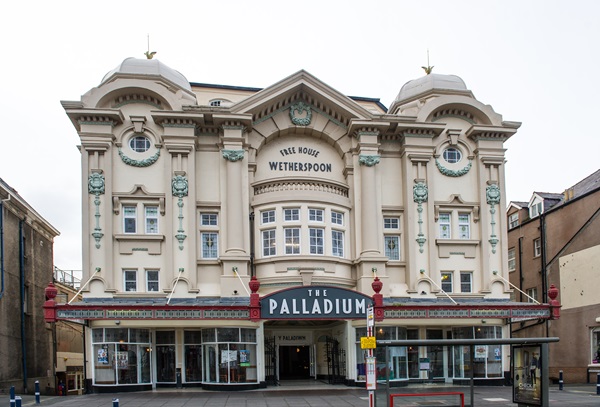
If you have information on the history of this pub, then we’d like you to share it with us. Please e-mail all information to: pubhistories@jdwetherspoon.co.uk